Alexanderconsulting
Blog 397: Quick Trip to Istanbul
12, 05 23, 08:32 Filed in: Travel | Photography
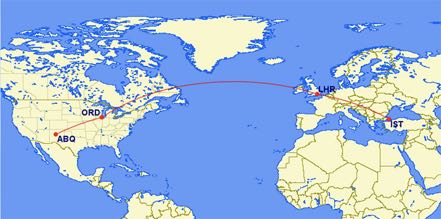
Jan and the Pups dropped me off at the Albuquerque airport where I started my work-trip journey to Istanbul via Chicago O’Hare and London Heathrow.
My Engagement
Funny how things happen. The catalyst behind my Istanbul trip was that the CEO of a French-based company doing business in 250 countries was determined to make a strategic shift in his company’s strategy. He read a book of mine and was now using it as his guide to transform his business. (Brilliant executive, don’t you think?) The interesting point is that I wrote the book 30 years ago! Anyway, he wanted me to deliver a two-hour keynote address to his top 140 managers from around the planet to help them get on board on his new vision.
Where the Heck is Istanbul?
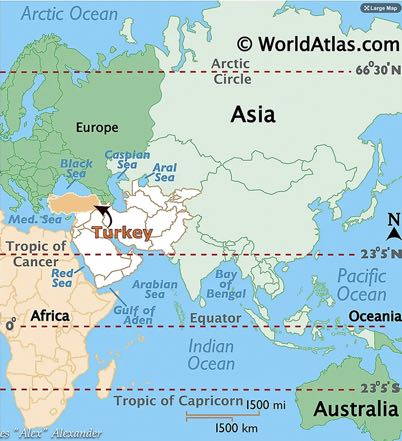
Turkey divides Asia from Africa. It borders the Black Sea to the north, Georgia to the northeast, Armnenia, Azerbaijan, and Iran to the east, Iraq to the southeast, Syria and the Mediterranean Sea to the south, the Aegean Sea to the west, and Greece and Bulgaria to the northwest.

Istanbul is located in northwestern Turkey and straddles the Bosporus Strait, which provides the only passage from the Black Sea to the Mediterranean via the Sea of Marmara. The Bosphorus River divides Europe from Asia. The population is officially 16 million, but locals in the know say it is at least 20 million, and some think it is 30 million due to the huge influx of refugees that moved from both Turkey and Syria after the February 2023 earthquake that exacted 60 million deaths (probably more).
Tourist Plan Gone Awry
This long trip was made even longer when I missed my last flight due to weather, and instead of arriving in Istanbul at 5:00 p.m. local time, I got to my hotel at 2:50 a.m. the next morning. My plan had been to make a full day of seeing the sights of Istanbul—taking public transportation to key spots and hoofing it most of the time to various locations. However, instead of heading out at sunrise bright-eyed, I was a tad jet-lagged burdened and wasn’t ready to roll till noon. I splurged and hired a private tour guide to compress a day’s worth of wandering into a focused three-hour excursion.
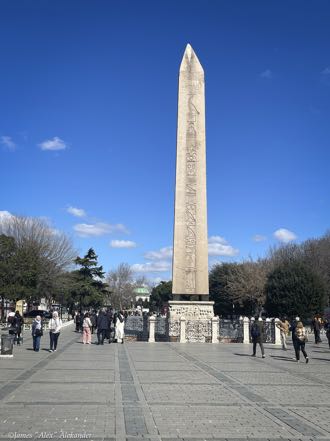
Sultanahmet Square
The Obelisk of Theodosius is a good starting point to explore Sultanahmet Square (also known as the Hippodrome of Constantinople). It is a large rectangle that contains much of the must-see places of the city. Here I am standing in front of the Blue Mosque, known for its beauty and historic significance during the Ottoman Empire.
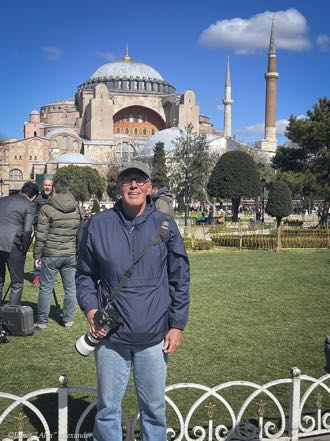
Unfortunately it is closed due to renovation.
With the Blue Mosque being closed, by far the most popular destination in Istanbul is the Hagia Sophia Grand Mosque.
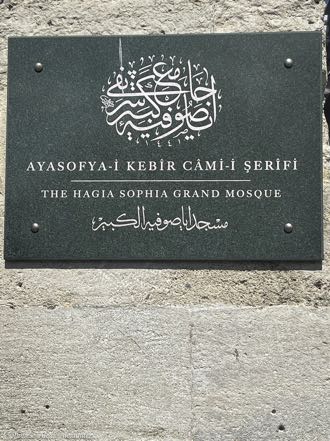
In the year 360, it was originally built as an Eastern Orthodox church and stood as the world's largest cathedral in the world until it was converted into a mosque in 1453 during the conquest by the Ottoman Empire. It served as a mosque until 1935, when it became a museum. In 2020, the site once again became a mosque. Here are two photos of the interior and one of an ancient mural.
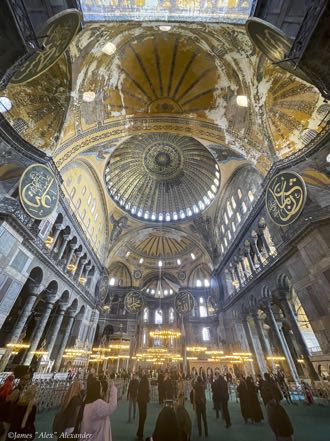
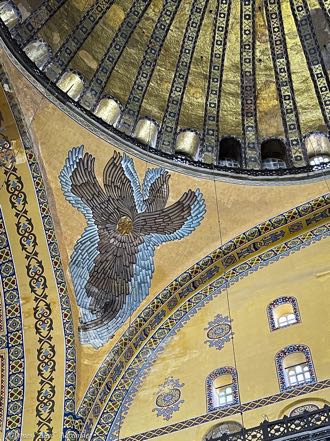
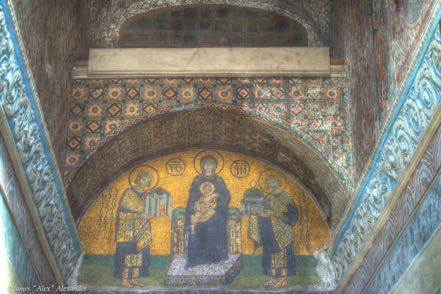
NOTE: The history of Istanbul is, long, complex, and fascinating. I’ve added some brief highlights at the end of the blog for those interested in a more detailed look at its history and another link to some info on Istanbul in general.
On the Streets
As one would expect in Turkey, there were numerous places touting rugs.
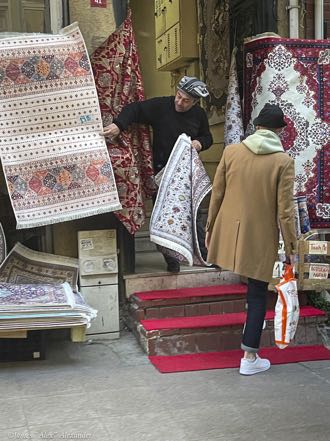
Candy was a huge attraction for tourists and locals alike. Although this mega-mall had a few other items, about 90% of the stalls were selling varieties of candy.
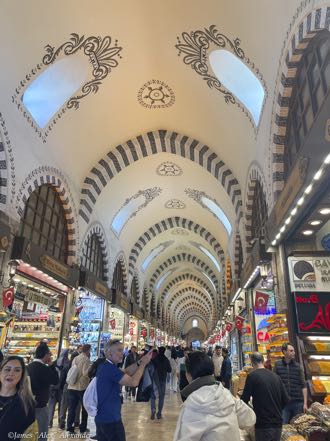
And as you venture into neighborhoods, you spot more stores providing basic needs. Here is a Turkish convenience store. I’m told the Viagara Tea is a big seller. :)
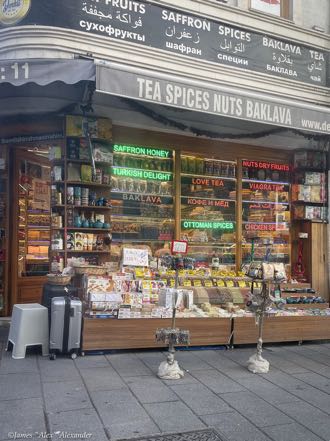
Boat Cruise
My tour guide got me back to my hotel in time to prepare and attend the formal dinner boat cruise with my client and his leadership team. The meal was incredible. I shared a table with the CEO, who is from France, a nice lady from China on her first trip out of her country since COVID, two Germans, an American, two Spaniards, a person from Algers, and two more French men. Quite the conversations! Here are a few shots from the boat that Alfonso, my colleague and main contact, shared with me.
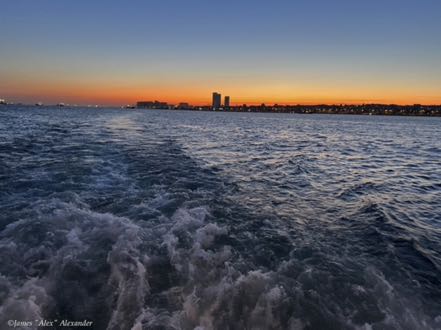
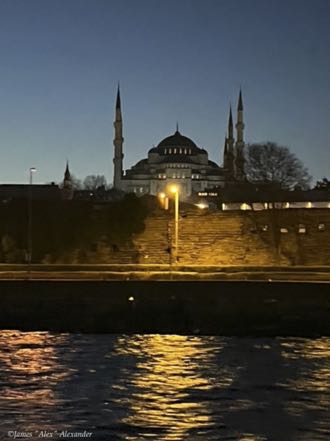
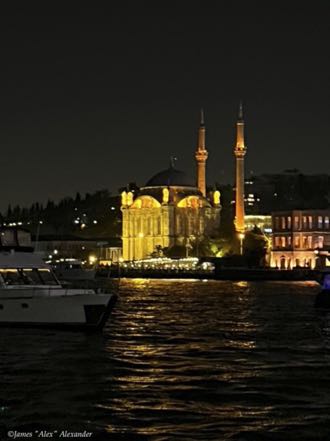
My Presentation
Here is a shot of me in action. It was a great experience.
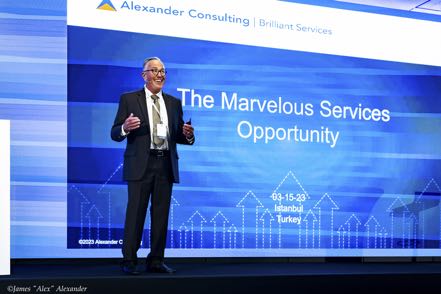
More Exploring
The afternoon after my presentation was set aside for group relaxation. After some serious strolling we stopped at The Most Turkish Restaurant for a variety of snacks and lots of entertainment put on by the staff. Here you see women preparing Bazlama (Turkish flatbread), a dancing waitress, a colleague wearing a quite-festive Turkish hat, and me joining the act.
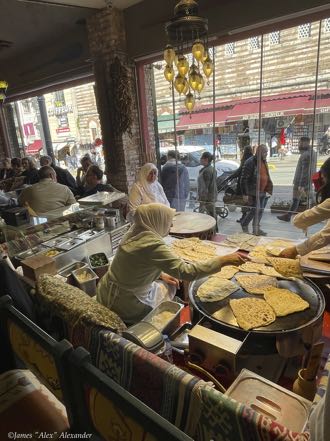
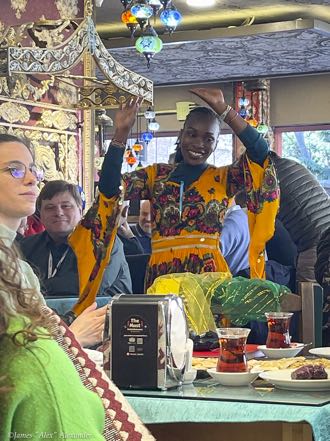
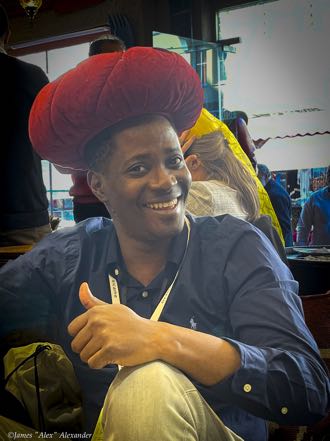

Another Boat Ride
Yes, the CEO loves boat rides! After our restaurant stop, we meandered toward the harbor and boarded another vessel for an afternoon cruise. Here is a view from our boat and a group photo (can you pick me out?).

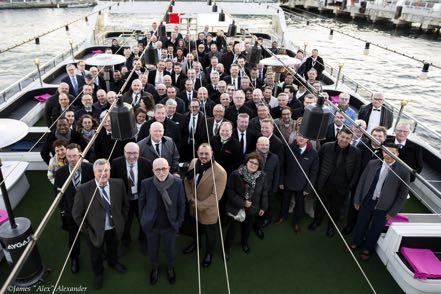
Journey Home
Luckily my journey home was uneventful (well, except for tornado delays in Dallas). I took an Uber from the Albuquerque airport to our home on wheels and was royally greeted in order by Jackson, Toby, and Jan.
Wonderful trip.
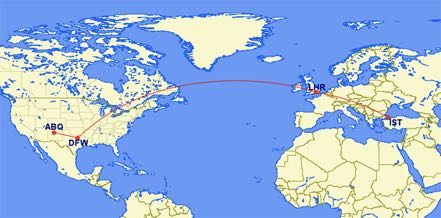
See you next time back in the States.
Brief History and Highlights of Istanbul
The history of the city proper begins around 660 BC. Formerly known as Constantinople, it is the largest city in Turkey, serving as the country's economic, cultural, and historic hub. The city straddles the Bosporus Strait, lying in both Europe and Asia. Istanbul is the most populous European city and the world's 15th-largest city.
The city was founded as Byzantium in the 7th century BCE by Greek settlers from Megara. The Roman emperor Constantine the Great made it his imperial capital, renaming it first as New Rome then as Constantinople after himself. The city grew in size and influence, eventually becoming a beacon of the Silk Road and one of the most important cities in history.
The city served as an imperial capital for almost 1,600 years: during the Roman/Byzantine (330–1204), (1204–1261), late Byzantine (1261–1453), and Ottoman (1453–1922) empires. The city played a key role in the advancement of Christianity during Roman/Byzantine times, hosting four of the first seven ecumenical councils before its transformation to an Islamic stronghold following the fall of Constantinople in 1923. After the Turkish War of Independence, Ankara replaced the city as the capital of the newly formed Republic of Turkey. In 1930, the city's name was officially changed to Istanbul.
In 2018, it was named a European Capital of Culture, making it the world's eighth most visited city. The historic center of Istanbul is a UNESCO World Heritage Site, and the city hosts the headquarters of numerous Turkish companies, accounting for more than 30% of the country's economy.
Sultanahmet Square (also known as the Hippodrome of Constantinople)
The word hippodrome comes from the Greek word horse, and dromos (δρόμος), path or way. For this reason, it is sometimes also called "Horse Square" in Turkish. Horse racing and chariot racing were popular pastimes in the ancient world, and hippodromes were common features of Greek cities in the Hellenistic, Roman, and Byzantine eras. The stands were capable of holding 100,000 spectators. The racetrack at the Hippodrome was U-shaped, and the Kathisma (emperor's lodge) was located at the eastern end of the track. The Kathisma could be accessed directly from the Great Palace through a passage that only the emperor or other members of the imperial family could use.
It is the Hagia Sophia that fully conveys the period of Constantinople as a city without parallel in Christendom. The Hagia Sophia, topped by a dome 31 meters in diameter over a square space defined by four arches, is the pinnacle of Byzantine architecture.
For more history on Istanbul, take a look at https://en.wikipedia.org/wiki/History_of_Istanbul
For other information on Istanbul, check out. https://www.britannica.com/place/Istanbul
